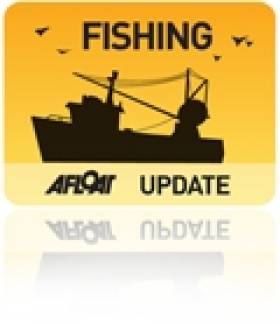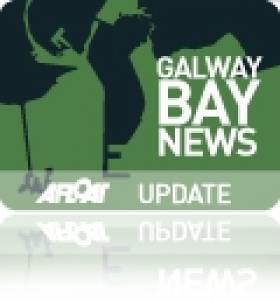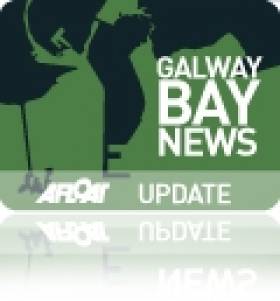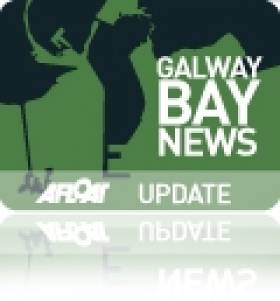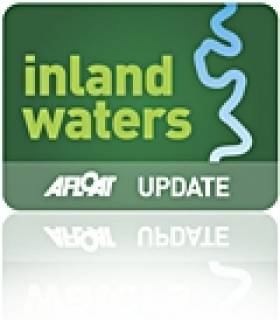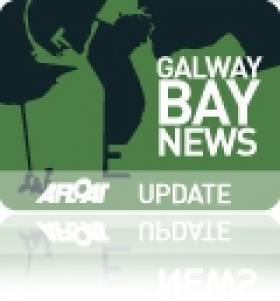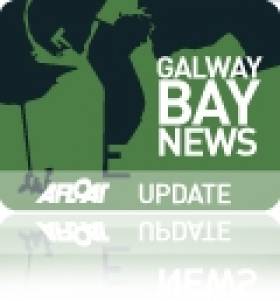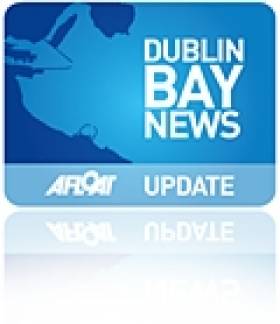Displaying items by tag: development
Greystones Harbour Project Delayed Over Park Land Issue
#Greystones - Greystones Harbour developments have hit another snag, with the project delayed till mid October amid concerns over the transfer of land earmarked for a public green space.
As the Wicklow Times reports, Wicklow County Councillor Jennifer Whitmore called for further deliberation over the proposed transfer of nearly six hectares of land originally part of a planned public park that is "a most important attribute" of the harbour development scheme.
The development company set up by the council claims that the land transfer is an obligation of the PPP contract for the scheme in order to provide for additional housing units, as the previous plans were deemed "commercially unviable".
However, Cllr Whitmore says the changes have essentially "semi-privatised a huge component of the public park. If you are going to be in the park with your children, you will have a whole row of houses looking down on you and you will feel like you're in someone's estate."
Cllr Whitmore also argued that the rationale for increasing the number of housing units no longer stands as the housing market has since reversed its downward trend.
The final decision has been deferred till the October council meeting, following a special meeting on the issue to be held by Greystones Municipal District Council.
Marine Minister Announces Expanded & Wide-Ranging €241M Seafood Development Programme To 2020
#Seafood - Marine Minister Simon Coveney today (Friday 27 March) announced plans for a new €241-million development programme for the seafood sector for the period up to 2020.
The new programme will be co-funded by the EU through the European Maritime and Fisheries Fund and is subject to adoption by the European Commission.
A public consultation on the minister’s proposals for the new programme and a strategic environmental assessment were published today, with comments invited by 1 May 2015.
In announcing the new programme, Minister Coveney said: “Our seafood sector is worth in the region of €850 million annually to our economy, with exports growing by 70% since 2009 to €540 million. Seafood is widely recognised as a high growth area of our economy, with the potential to grow to €1 billion by 2020.
"The investment package I am announcing today will be a key element in achievement of that growth potential. It will provide the capital to assist seafood enterprises to sustainably grow their production, add value to our seafood exports and create much needed employment in our coastal communities.”
He went on to say that he "negotiated a doubling for the period to 2020 of the EU seafood development funds to Ireland. Under this programme, €147 million will be provided to Ireland under the European Maritime and Fisheries Fund. Government is providing an additional €94 million in co-funding, demonstrating our commitment to growing and developing the sector.”
The minister said he recognises "at the outset that there will be many views on how these funds would best be invested and on which particular areas should be prioritised.
"Following a detailed process of analysing the investment needs of the sector, I am proposing today that we invest €42 million in implementing the new Common Fisheries Policy, including measures for developing more selective fishing gear, and supporting the new discards ban.
"I am also proposing that we invest a further €6 million to build on the good work that has been ongoing over recent months to revive and sustainably grow our inshore fisheries; €30 million to sustainably develop our aquaculture industry and implement a new national plan for aquaculture that I will be announcing shortly; €12 million to grow the seafood based economies of our coastal communities through community-led fisheries local action aroups; and €41 million to grow markets for our seafood products, develop our seafood processing industry and develop new value added products for those markets.
"I am also making available almost €10 million to support implementation of EU environmental law, to help protect vulnerable habitats and species and ensure that our seafood sector continues to operate and grow in a sustainable manner.”
The Minister concluded by inviting comments on these proposals by 1 May, and said he looks forward "to considering all views and discussing them with stakeholders”.
Galway Harbour Hearings Roundup: Mayor Shows Full Support, Infrastructure Questioned, Alternatives Proposed
#GalwayHarbour - Galway's mayor reiterated his full support for plans to redevelop the city's port on the final day of An Bord Pleanála's hearing into the €126 million scheme.
As The Irish Times reported last weekend, Mayor Donal Lyons said the port expansion was vital for the future of the city, echoing claims that Galway Harbour could face terminal decline unless the redevelopment goes ahead as planned.
The potential economic benefits were raised by Esmond Keane SC, on behalf of the Galway Harbour Company, who said "it is not feasible to suggest that cruise tourism could be relocated to another port away from Galway."
Ian Lumley of An Taisce made a final submission questioning the wisdom of developing a new port that "lacks connection" to the national road transport infrastructure.
The Shannon Foynes Port Company also dismissed claims that there were no viable alternatives to the expansion, citing its own status as a 'Tier 1' deepwater commercial port that operates on a 24-hour basis compared to Galway's more modest plans.
That came after Galway West TD Noel Grealish's earlier rejection of Shannon Foynes' objections as "spurious" and motivated by "self-interest".
Previously the hearing also heard from town planner Aiden O’Neill, who said the Galway Harbour scheme went against a number of State policies such as the 2013 National Ports Policy.
"Long-standing" proposals for a deepwater quay at Rossaveal, on the north shore of Galway Bay in Connemara, were suggested as an alternative to bolster the current Galway Port, while fishing and cycling representatives expressed their various concerns over the impact of the redevelopment.
Two weeks of evidence will now be evaluated by An Bord Pleanála with a full report expected by the end of March. The Irish Times has more on the story HERE.
#WicklowHarbour - Progress is being made in development works at Wicklow Harbour, a recent town council meeting heard.
According to the Wicklow Times on 13 May, Wicklow Town Council director of services Sean Quirke gave the lie of the land with respect to the harbour development as of the end of April.
Quirke reported that developer Sisk - which is also responsible for works currently on hold at Greystones Harbour - said planning for the first stage of construction was under way, as were arrangements for the appointment of a building partner.
Dredging and disposal works in the harbour itself are in progress, as previously reported on Afloat.ie, while the storm-damaged beach is under repair and access to the breakwater is scheduled to open shortly.
Meanwhile, there have been discussions with the resident sailing and ridge angling clubs over plans for their new clubhouse facilities.
It's being proposed that Sisk would take over the development of the new clubhouses, with a commitment to completing their new facilities in tandem with the rest of the harbour plaza scheme, while offering the clubs temporary accommodation in the interim.
In addition, a site investigation was completed for the proposed new coastguard station, a long-awaited addition to Wicklow's harbour - and the delay of which was bemoaned by Cllr Tom Fortune.
Galway Port Expansion '99 Per Cent Ready To Go'
#GalwayHarbour - Plans for the expansion of Galway Harbour are "99 per cent ready to go", as the Galway Independent reports.
Eamon Bradshaw, CEO of the Galway Harbour Company, said that the application for the new development would be submitted by the end of June.
As previously reported on Afloat.ie, the scheme will be the first Irish project lodged under new legislation that provides for planning permission on the grounds of "overriding public interest".
Bradshaw says that the necessary Natura Impact Statement has been completed, and economic and financial details were now being finalised for the redevelopment project at the harbour, recently recognised by the Government as a 'port of regional significance'.
Should it get the go-ahead from An Bord Pleanála, the new harbour will extend almost 1km out to sea with 660m of quay berth and plenty of space for cargo and container ships, oil tankers, fishing vessels and passenger ships.
The project will be completed in four phases, with the first €50 million phase extending the port by some 57 acres to accommodate a greater number of commercial ships and modern cruise liners.
Galway City Council recently granted extra time to the Galway Harbour Company for pre-expansion demolition works in the docks area.
The Galway Independent has much more on the story HERE.
#GalwayPort - Galway's city manager has welcomed the recognition of Galway Port by Government as a 'port of regional significance'.
As previously reported on Afloat.ie, the National Ports Plan launched this week brings about a move away from a 'one size fits all' policy in the ports sector to a three-tier stricture that recognises the different roles that Ireland's ports play in the economy at both a national and regional level.
Galway Port is one of 14 ports, five of them in State hands, that account for some 8% of national trade, and which will be placed within a local authority-led governance and shareholding structure.
Galway Bay FM quotes city manager Joe O'Neill as saying that it's as yet to early to speculate on plans to transfer control of the port to the local authority before the necessary legislation is put in place.
It is also unclear whether it will be the city, county or a combination of both that would be responsible for the port in the coming years.
Meanwhile, the Galway Harbour Company is expected to seek planning permission for the first phase of its expansion plans shortly.
In January, Afloat.ie reported on a 'fast-track' on the cards for the redevelopment scheme after plans were revived in August last year.
The new first phase, at a cost of €50 million, will see the port extended by some 57 acres to accommodate a greater number of commercial ships and the new generation of cruise liners.
And as Galway Bay FM confirms, the plans will be lodged with An Bord Pleanala under IROPI (Imperative Reasons of Overriding Public Interest) legislation.
IFI Completes New Cross-Border Angling Project in Leitrim
#InlandWaterways - Inland Fisheries Ireland (IFI) marked the completion of an angling development project under the Interreg IVA Cross Border Harnessing Natural Resources Programme in Co Leitrim today (Friday 22 March).
The IFI project incorporated the development of angling facilities at two locations - Acres Lake in Drumshanbo and Herons Shore on Lough Allen - with the aim of harnessing the nature-based tourism potential of the region and fostering cross-border economic development.
IFI upgraded existing car parks and added additional car parking spaces, angler access points, information signage and floating fishing stands.
Speaking at the ribbon cutting ceremony, IFI board chair Brendan O’Mahony said: "The essential investment in programmes such as this one ensures the long-term sustainability of angling amenities for Ireland. It increases visitor numbers which in turn provides job opportunities and revenue for local communities.
"It also raises the standard of the angling experience for all levels of angler and ensures that the resource is accessible for all to enjoy”.
O’Mahony also commended the commitment of the drivers of such projects and their vision.
Recognising that the phase completed by IFI is only one part of the overall programme, IFI director Amanda Mooney commented that the fisheries body was "delighted to be given the opportunity to be part of the overall Harnessing Natural Resources Programme" and wished success to partner agencies on their own projects.
Galway Port Plans Must Look To The Future Says Ex Statoil Head
#GalwayPort - A former director of Statoil has said Galway needs to look "10, 20 or 30 years ahead" to make use of the vast potential of the marine sector amid plans for the redevelopment of the city's port.
As the Galway City Tribune reports, Stein Bredal made a six-day visit to the City of the Tribes during which he proposed that proper management of the Galway Port scheme would create thousands of long-term jobs across a number of sectors.
He posited his home city of Stavanger in Norway as an example to follow. The city - with double the population of Galway - has become a service hub for Norway's west coast oil and gas fields.
And Bredal believes Galway could become the same for Ireland's offshore reserves, not to mention tourism (in the form of local hospitality and berths for cruise liners) and aquaculture (such as the proposed deep-sea organic salmon farm off the Aran Islands).
“You need someone in this city to think 10, 20, or 30 years ahead," he said. "You need to give hope to the young generation, that they don’t need to emigrate to Australia or New Zealand, that the service jobs can be located here."
As previously reported on Afloat.ie, fast-tracking of pans for the €200 million redevelopment of Galway Port is on the cards thanks to a clause in EU regulations that allows for planning applications to be made under IROPI (Imperative Reasons of Overriding Public Interest) legislation.
'Fast-Track' On Cards For Revived Galway Port Development Plans
#GalwayPort - Revived plans for the €200 million redevelopment of Galway Port may take a great leap forward in the next few weeks with the publication of a new policy document by the Minister for Transport.
The Galway City Tribune reports that Minister Leo Varadkar will release a 'Port Policy Statement' containing key recommendations for a development planning application to be made under IROPI (Imperative Reasons of Overriding Public Interest) legislation.
As previously reported on Afloat.ie, plans for a new deeper port in Galway Harbour were revived in August 2012 as harbour bosses sought to exercise a clause in the EU habitats directive.
Galway Harbour Company chief executive Eamon Bradshaw said at the time that the company was taking a new route after examining previous planning applications involving sensitive habitats.
He pointed out that under article 6.4 of the EU habitats directive, applications for projects classified under IROPI legislation allow developers to compensate for any infringement on sensitive habitats by restoring an area of a similar size in a different location.
It's now expected that the IROPI 'fast-track' will be approved if the Galway Harbour Company can prove that the port will have a significant economic benefit to bot the region and Ireland as a whole.
The Galway City Tribune has much more on the story HERE.
Dun Laoghaire Harbour Tenders for 'Marina Village' Design Proposals
#DunLaoghaire - The Dun Laoghaire Harbour Company has issued a tender for a design team to draft a vision for the proposed 'Marina Village Project' in the port town.
The Marina Village development is on the site of the former Shell Chemicals facility at the West Pier next to the Dun Laoghaire Motor Yacht Club, at an area known as the 'Gut'.
It is also part of the Masterplan launched in mid-2011 intended to "position Dun Laoghaire Harbour as a marine, leisure and tourism destination of international calibre".
As per the Masterplan, the development is intended for residential and water-sports use, and the aim of this tender us to "identify the optimum development proposition for the site".
The tender document suggests that proposed water-sports facilities at the site "could potentially be occupied by users such as the Sea Scouts".
In their joint response to the launch of the Masterplan in June 2011, Dun Laoghaire's yacht clubs identified a "significant amount of shore space" ripe for development in the area earmarked for the Marina Village scheme.
The request for proposals is available to download as a PDF below.




























